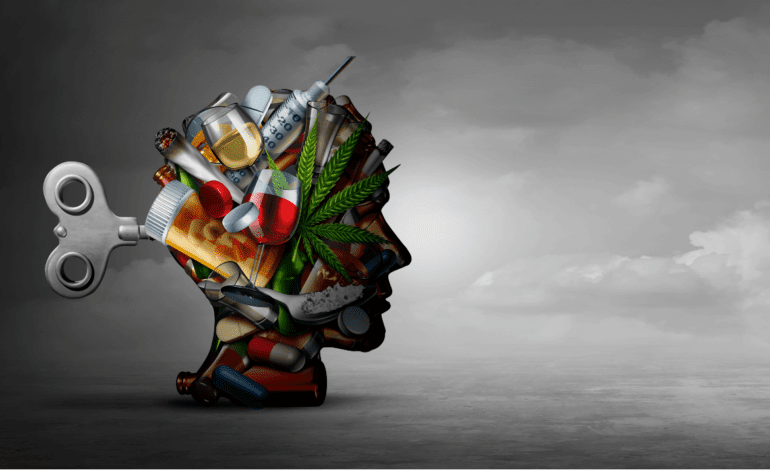It’s no secret that mental illnesses are common in the United States. However, the structure of the American behavioral healthcare system has dealt with substantial threats and has had difficulty delivering addiction and mental health treatment to the majority of people in need.
According to the National Alliance on Mental Illness (NAMI), approximately one in five American adults, or more than 44 million adults, faces some form of mental illness in any given year. Further, more than 55 percent of this population does not receive any treatment, including those individuals who are addicted to drugs or alcohol. This is a terrible irony in American history.
Serious Mental Health Workforce Shortage
As the epidemic of mental health issues and addiction coats the country, people who need urgent care are faced with yet another shortage of required behavioral healthcare facilities and providers. The workforce shrinkage can be attributed to several factors, including:
- The aging of the existing personnel
- Reduced reimbursement rates
- Troublesome documentation formalities
- Prohibitive laws that prevent sharing clinical data required for correlative care
As reported by Mental Health America (MHA) in 2018, states with the lowest mental health workforce have only one mental health professional for more than six individuals. These professionals include psychologists, psychiatrists, social workers, psychiatric nurses and counselors altogether.
Maldistribution of mental health providers is another big concern and is evident in several areas of the U.S. that do not have access to any behavioral health services or very few providers in their vicinity. For instance, in Alabama, it was reported that there was only one mental health professional per 1,260 people.
Furthermore, nearly 77 percent of counties are under-dealt, and 55 percent of states reported having a “serious shortage” of child and young behavioural services. The shortage of mental health providers puts a strain on both the provider to meet the high demand for treatment and often must take on large caseloads. At the same time, clients who are put on long wait-lists and sometimes may not be seen for several months.
The Shortage of Professionals is Hitting Rural Areas the Hardest
The shortage of behavioral healthcare providers is most troubling in rural areas, according to a report by C. Holly A. Andrilla, M.S., and colleagues from the WWAMI Rural Health Research Center in the Department of Family Medicine at the University of Washington School of Medicine, Seattle. “Understanding this unequal distribution is necessary for developing approaches to improving access to behavioral health services for underserved populations,” said Andrilla, the lead researcher of the study.
The report found that there was a particularly high demand for behavioral healthcare services in rural areas, which have been strongly stricken by the opioid drug epidemic and budgetary recession. Such rural areas also been reported to have a suicide rate that is twice that of urban areas.
Moreover, the shortage is evident even in urban and suburban topographical regions that have an adequate number of psychiatrists and other mental health providers. As many psychiatrists and mental health professionals have cash-only private practices, even fewer people are able to afford or access treatment. To meet such as high demand for mental health care, providers would need to treat six times more people than providers in the highest ranked states.
How do Low Reimbursement Rates Contribute to the shortage of professionals?
As mentioned earlier, there are several reasons that the U.S. is experiencing a shortage of psychiatrists and other mental health providers at this time. There was a decline of 10 percent among practicing psychiatrists from 2003 to 2013 due to low compensation for services, according to a recent study conducted by Tara Bishop from Weill Cornell Medical College in July 2016. It was noted that psychiatrists are among the lowest compensated specialties, which is a major reason that jobs may not be replaced quick enough to replace the aging professionals.
These very reports identify some of the primary reasons why people have such poor access to mental healthcare and why many psychiatrists who do not accept any types of insurance (due to low compensation rates) are able to sustain practices. To deal with the workforce shortage problem, it is vital to increase reimbursement rates through policy changes and a new model of care.
Increasing the number of competent psychiatrists could help to remediate the current issues facing health care providers across the country, including:
- The over-reliance on the emergency departments (ED) to provide immediate judgement and care for addiction and mental health issues.
- Low customer satisfaction with behavioral health services.
- The opioid epidemic that is skyrocketing the nation.
Map to Recovery
It is perplexing that the country is facing the problem of a shrinking psychiatric workforce at the same time when the value of mental health and psychiatry is being given more recognition and is much needed. Nevertheless, there are healthcare and government organizations that are willing to work collectively to help people in need.
If you or someone you know is dealing with any mental issue, you can contact us at AKUA Mind & Body. Our clinical team understands that focusing solely on mental health can help one recover from their life-estranging mental health problems.
References:
https://www.nami.org/Learn-More/Mental-Health-By-the-Numbers
http://www.mentalhealthamerica.net/issues/state-mental-health-america
https://www.sciencedaily.com/releases/2018/05/180517102343.htm
http://www.apa.org/advocacy/health/mental-behavioral-needs.pdf
https://www.medpagetoday.com/psychiatry/generalpsychiatry/59125
24/7 ADMISSION HELPLINE 888-629-6707




